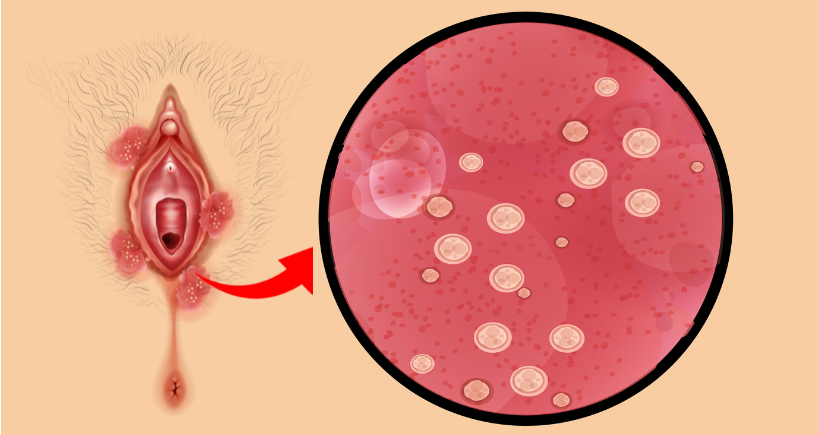
Phimosis Overview: Symptoms, Causes, Diagnosis, and Treatment Insights
Introduction
Phimosis is a congenital condition of male genitalia in which the prepuce or the foreskin of the penis cannot be retracted over the head or glans. In boys, it is not a serious issue if it occurs before the age of five; however, when they are older, it should be a cause of concern. Phimosis is usually painful and can result in infection and problems with urination.
What is phimosis?
Phimosis can be classified into two types:
- Physiological phimosis: This is a normal state of affairs in infancy and early boyhood in which the prepuce cannot retract because it forms a covering over the glans. Some boys’ foreskin tend to harden and become inelastic as the boy grows in age, while in other boys, the foreskin gains elasticity and can be retracted.
- Pathological phimosis: In this case, phimosis proves to be congenital due to scarring, infection or inflammation. This type can develop at any age and is likely to necessitate professional treatment.
Symptoms of phimosis
Phimosis is generally diagnosed when several obvious characteristics are seen in the patient. Some individuals with the condition may experience no symptoms at all, but in more severe cases, the following may occur:
- Difficulty retracting the foreskin: The best-known sign of phimosis is when the foreskin cannot be retracted over the head of the penis.
- Pain or discomfort during urination: If it is too tight, it will restrict urination, and sometimes, this results in a situation similar to when a balloon is filled because urine is trapped before passing through.
- Recurrent infections: Since a tight foreskin forms a restricted area in which bacteria can breed, this results in Urinary Tract Infections (UTIs) or balanitis, an inflammation of the foreskin and/or glans.
- Swelling and redness: General symptoms include swollen, red, and tender foreskin.
- Pain during erection: He may have painful urination, which increases with sexual arousal, and therefore, has an affected sex life due to phimosis.
Causes of phimosis
Phimosis can result from a variety of factors, and understanding its root causes can help determine the most appropriate treatment:
- Age: It is worth remembering the fact that young boys have a virtually constricting foreskin that later becomes mobile. However, if it lasts through adolescence or adulthood, it could be pathological phimosis.
- Infection: If the inflammation is bacterial or fungal, particularly if it is recurrent, the foreskin will become scarred, and clitoral tissue will be tightened. This is normally prevalent with bad hygiene and other complications such as balanitis.
- Injury or trauma: Phimosis arises from injury, forceful retraction of the foreskin, or any other intravenous or extraneous force that the foreskin has to overcome to retract over the glans before and after birth.
- Inflammation: Gardner’s floor, lichen sclerosus, an inflammatory skin disease, predisposes men to long-standing inflammation and scar formation leading to phimosis.
Diagnosis
Diagnosis of this condition is not complicated and can often be made clinically by a healthcare provider during a physical examination of the child’s genital area. The symptom complex and the patient’s history are often sufficient to establish the diagnosis. If infections repeatedly occur or if other complications are suspected, the doctor may carry out more tests in order to exclude other diseases.
We have to make a distinction between phimosis and conditions like paraphimosis, where the foreskin can be retracted only partially and cannot be fully pulled back behind the glans. This is considered a true emergency.
Treatment
Topical steroid creams: The first method of treating this condition is topical corticosteroid creams. These creams assist in reducing inflammation, and often, over a period of time, it becomes easy to pull back the foreskin. It is painless and generally used topically, which may be administered once a day for a few weeks.
Gentle stretching exercises: One non-surgical technique that is advocated entails pulling the foreskin gently, a practice that can make the foreskin more loosened as time goes by. It is used hand-in-hand with the use of steroid creams. It is used hand in hand with the use of steroid creams.
Oral medications: When phimosis is due to infections, the doctor may prescribe antibiotics or anti-fungal to address the main cause of the condition.
Phimosis surgery: If initial interventions do not work, or in any case, phimosis surgical treatment – circumcision may be suggested. In circumcision, the foreskin is removed in its entirety, and any problems associated with the condition are thereby eliminated. Another technique of surgery is preputioplasty, where most of the foreskin is left uncut, though it is artificially stretched via specific incisions.
Circumcision is normally believed to be the ultimate remedy for phimosis, though it may not be compulsory in some cases. Most patients undergoing phimosis surgery get well very fast, with few complications.
Conclusion
Phimosis is widely spread among men regardless of their age. However, it is curable with everything from topical corticosteroids and physical therapy with stretching to more serious measures of circumcision. Phimosis symptoms in males can become painful and cause complications; consulting a doctor should be the next action if the symptoms are felt or witnessed in someone else.



















